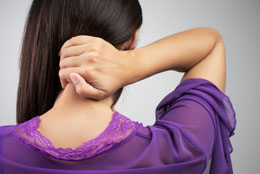In recent years, the demand for home neck traction devices has risen drastically due to the increasing problems of neck pain. This article will inform you about these devices and related issues.

If you work in an office where you have to sit in front of computers, peeping continuously into them, then you can understand how it strains your neck muscles. If this is not a cause for your neck pain, then the hectic schedule of your work and stress may be the contributing factor. Home neck traction devices are the ones that can help you get rid of neck pain by relieving the pressure and tension in the muscles around your neck area.
Mechanism
It is a technique that utilizes a device to get rid of the tension in the neck muscles, tendons, and ligaments. These devices are especially designed for the purpose of improving blood supply to neck muscles and providing relief to the neck from any kind of pain. In the present age, work pressures and continuous hours of sitting in front of the computers has become the sole reason for neck pain, that often turns out to be frustrating for many people. In bone problems like arthritis, these devices are very effective in providing relief. For many years, such devices have been used to get relief by removing nerve pressure and relaxing the tight muscles of the neck. However, the devices were difficult to operate and cumbersome. Nowadays, newer and easy-to-use designs are available, and consequently, the demand for them has risen significantly. You even have various orthopedic and chiropractor experts who can help you in learning how to operate these devices yourself.
These devices are not recommended to be used for people suffering from the following problems:
- Fractures
- Disorders of blood clotting
- Dental problems
- Spinal cord injuries
- Mental disorders
- Inflammatory diseases
- Very advanced stage of rheumatoid arthritis
- Post-surgical pain
Reviews
There are various devices available in the market for this problem. The users or buyers of these devices should be aware of these products so that they can easily choose from amongst the various options. Cost-effectiveness, price, comfort, and function are the main criteria that must be kept in mind while choosing the devices. They are usually of two types:
- Overhead Traction Devices: These are least beneficial and most cost-effective. They help in distributing the pressure on the discs, spine, neck, and nerves with the help of a water-filled bag to provide the required tension. However, they put pressure on the jaws, and it is difficult to adjust the force. Still, for simple neck problems, people prefer them as they are inexpensive, portable, and require less space.
- Neckpro Cervical Traction Device: This device is different from the traditional over-the-door systems that use a bag of water for determining the amount of traction poundage. This device is coupled with a computer-designed spring system and a ratcheting device that helps better adjustment of cervical traction tension around the neck. It can easily fit into doors up to 1.75'' (4.4 cm) of thickness.
Doing traction at home is comfortable for patients, and they can heal faster. Neck home traction devices must always be followed with proper instructions given on the manual, as it is a medical device. If proper instructions are not followed while treating them, then it can lead to excess pressure on the temporomandibular joint (TMJ), which can cause pain and irritation. Some people are advised to use the devices once or twice a week, while some may need to use it more than that. Consulting an expert before the first usage is always advisable. Many shop owners give discounts to senior citizens as well, making these pretty cost-effective. Home neck traction devices have made the use of neck traction to relieve pain with a much easier possibility, that too in the comfort of your home.
Disclaimer:
This Buzzle article is for informative purposes only, and should not be used as a replacement for expert medical advice.


 If you work in an office where you have to sit in front of computers, peeping continuously into them, then you can understand how it strains your neck muscles. If this is not a cause for your neck pain, then the hectic schedule of your work and stress may be the contributing factor. Home neck traction devices are the ones that can help you get rid of neck pain by relieving the pressure and tension in the muscles around your neck area.
If you work in an office where you have to sit in front of computers, peeping continuously into them, then you can understand how it strains your neck muscles. If this is not a cause for your neck pain, then the hectic schedule of your work and stress may be the contributing factor. Home neck traction devices are the ones that can help you get rid of neck pain by relieving the pressure and tension in the muscles around your neck area.